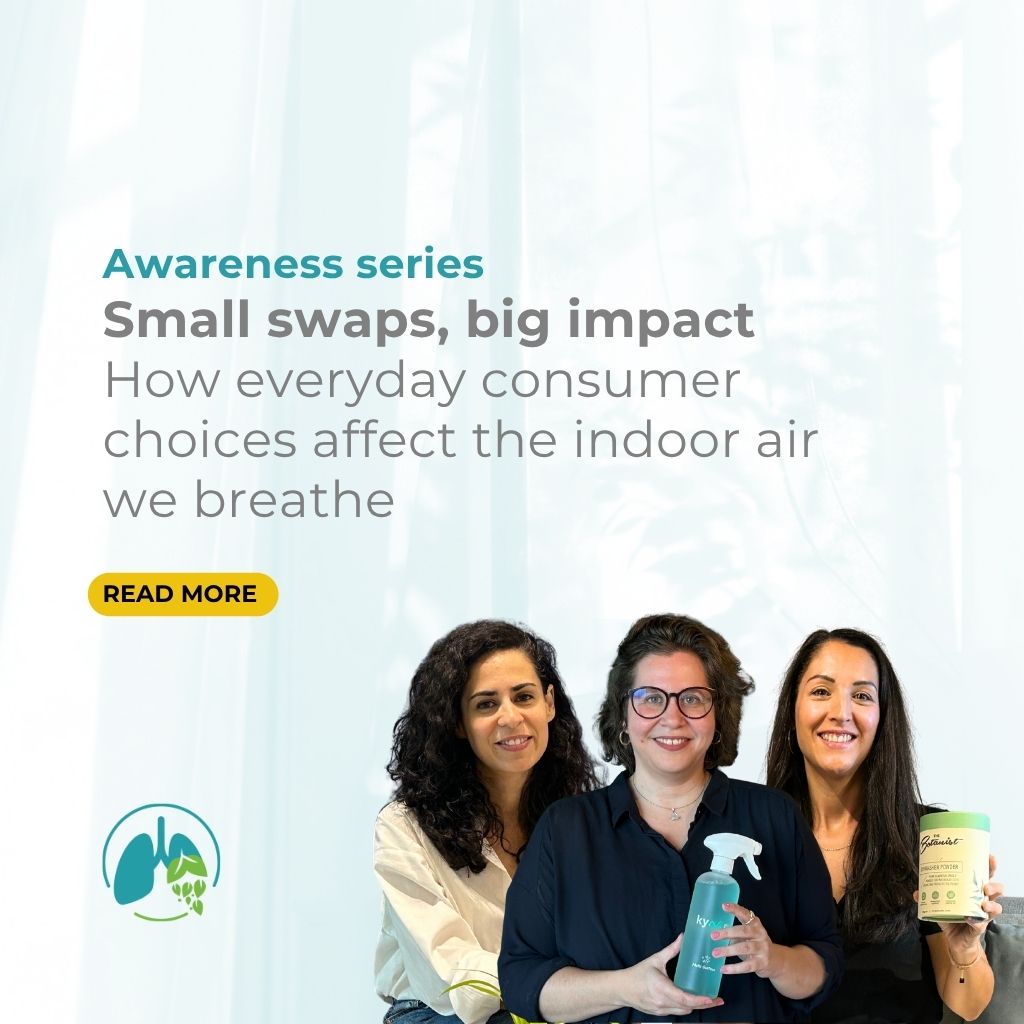The Power of Everyday Products
We often think about air pollution as something outside — traffic, industry, dust. But research shows the air inside our homes can actually be more polluted than the air outdoors. Much of this comes from the everyday products we use: cleaning sprays, laundry detergents, candles, fragrances, and cosmetics.
Three inspiring women in the UAE – Farida El Agamy, Olivia Bou Antoun, and Marie Rino – are on a mission to change this. Each of them turned personal challenges into solutions that help families and communities create healthier living and working environments, while also protecting the planet.
Cleaning Products: When Clean Doesn’t Feel Clean
Farida El Agamy noticed that many conventional cleaning products were harsh on the skin and came packaged in endless single-use plastics. What was meant to create a “clean” home often left behind chemical residues that irritated her family and contributed to waste piling up.
Her journey highlighted a bigger reality: when plastics and cleaning agents break down, they don’t simply vanish. They release tiny particles and chemicals into the air we breathe indoors. For families, this means that what feels like a clean surface can sometimes come at the cost of polluted air.
The Fresh Laundry Paradox
For Olivia Bou Antoun, the turning point came during lockdown when she began reading the ingredient lists on household products. She was startled to discover how laundry detergents — something used daily and worn on the skin all day — were filled with chemicals that release invisible gases known as volatile organic compounds (VOCs).
These compounds don’t just stay in the washing machine. They linger on clothes, circulate in indoor air, and can cause symptoms like headaches, skin irritation, or asthma flare-ups. And that “fresh laundry smell” many people love? Often it’s just a strong synthetic fragrance — a signal that VOCs are present in the air.
Cleaner Air: It’s in the Small Swaps
Marie Rino’s awareness grew over years of parenting and life experiences. She began asking why illnesses like asthma, eczema, and even hormone-related conditions seemed to be on the rise. What she discovered was that synthetic fragrances and chemicals in everyday products – from candles to shampoos – were a quiet but significant contributor to indoor air pollution.
Rather than trying to change everything overnight, she began with small swaps: choosing natural candles over paraffin-based ones, using essential oils instead of air fresheners, and opting for personal care products without hidden toxins.
Why It Matters
Indoor air quality is a cornerstone of wellbeing. The products we use daily – from what cleans our floors to what scents our rooms – can either pollute or protect our homes. By making conscious choices, we safeguard our health, our children’s futures, and our environment.
Farida, Olivia, and Marie prove that solutions exist and that small actions can ripple outward into powerful change.
Take Action Today:
- Switch to a nature-based detergent
- Rethink your choice of cleaning spray
- Opt for natural candles like beeswax or soy-based options.
- replace synthetic fragrances with natural essential oils
- Choose skincare free from formaldehyde-releasing preservatives.

